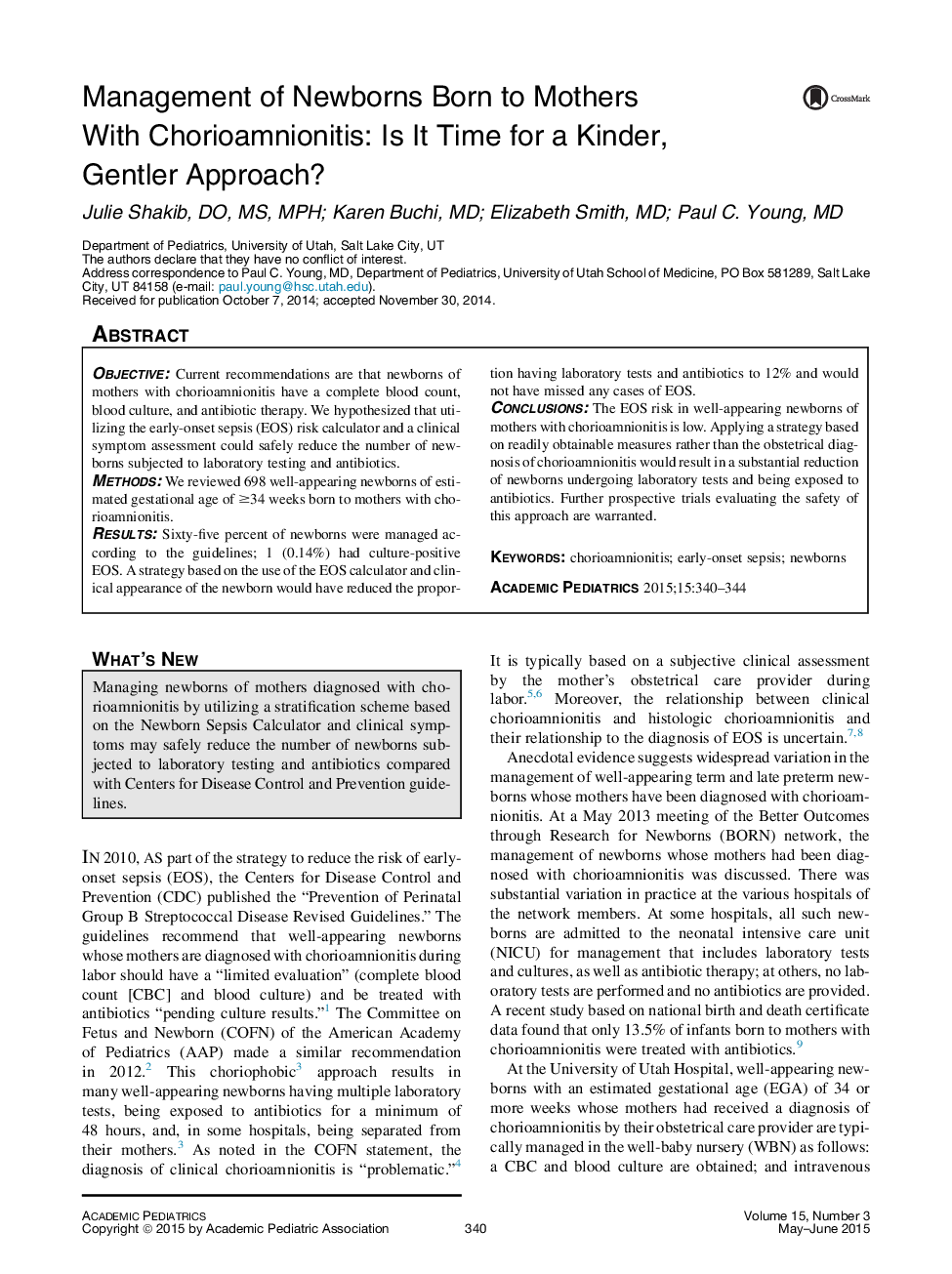| Article ID | Journal | Published Year | Pages | File Type |
|---|---|---|---|---|
| 4139440 | Academic Pediatrics | 2015 | 5 Pages |
ObjectiveCurrent recommendations are that newborns of mothers with chorioamnionitis have a complete blood count, blood culture, and antibiotic therapy. We hypothesized that utilizing the early-onset sepsis (EOS) risk calculator and a clinical symptom assessment could safely reduce the number of newborns subjected to laboratory testing and antibiotics.MethodsWe reviewed 698 well-appearing newborns of estimated gestational age of ≥34 weeks born to mothers with chorioamnionitis.ResultsSixty-five percent of newborns were managed according to the guidelines; 1 (0.14%) had culture-positive EOS. A strategy based on the use of the EOS calculator and clinical appearance of the newborn would have reduced the proportion having laboratory tests and antibiotics to 12% and would not have missed any cases of EOS.ConclusionsThe EOS risk in well-appearing newborns of mothers with chorioamnionitis is low. Applying a strategy based on readily obtainable measures rather than the obstetrical diagnosis of chorioamnionitis would result in a substantial reduction of newborns undergoing laboratory tests and being exposed to antibiotics. Further prospective trials evaluating the safety of this approach are warranted.
